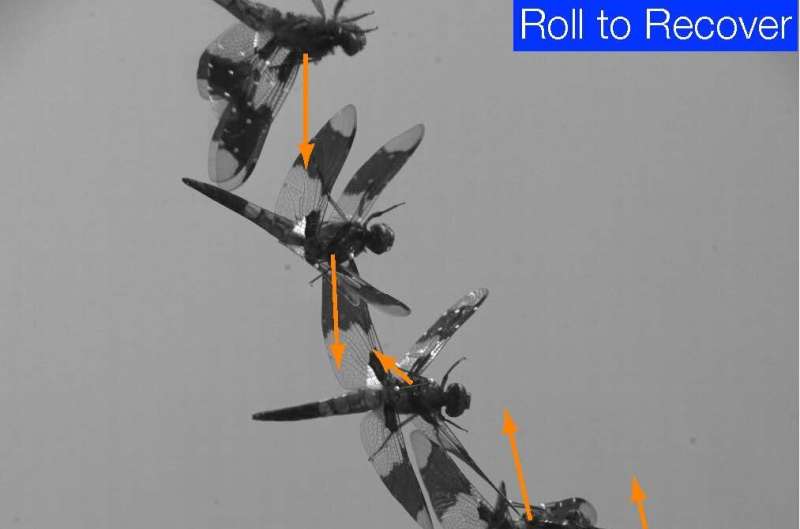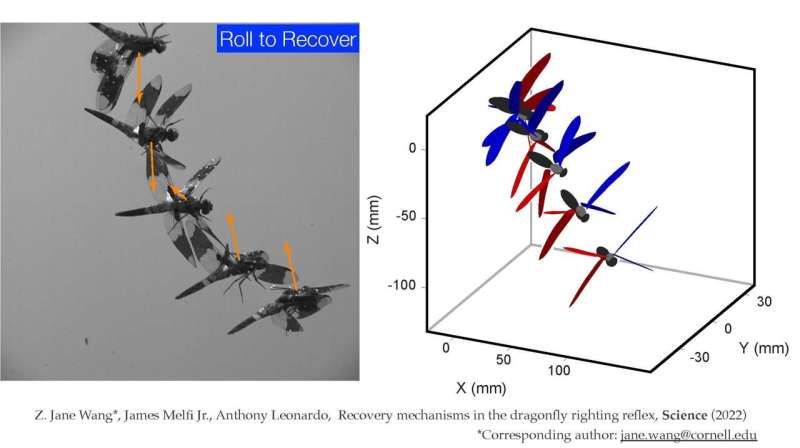May 13, 2022 report
How dragonflies right themselves when dropped upside down

A trio of researchers, two with Cornell University, the other with Howard Hughes Medical Institute, has discovered the means by which dragonflies are able to right themselves so quickly from an upside-down orientation. In their paper published in the journal Science, Z. Jane Wang, James Melfi and Anthony Leonardo describe experiments they conducted with flying dragonflies and what they learned about the insect's flight mechanics.
Dragonflies are flying insects characterized by pairs of transparent wings, a long, thin body and multifaceted compound eyes. They are generally seen around ponds and marshes. They are also known for their flying agility, and it was this feature that got the researchers wondering about their ability to recover from a scenario that they are unlikely to find themselves in naturally—suddenly falling upside down.
The work involved collecting specimens for lab study. They began by grabbing specimens, turning them over, and letting them drop. They found that all of the specimens recovered very quickly—so quickly that the researchers were unable to follow the action. Next, they painted little white dots on the wings and bodies of several specimens and filmed them falling using a high-speed camera. In the slow-motion video, they were only partially able to determine what the dragonflies were doing to turn themselves right side up.
Undaunted, the researchers used the video to create a computerized 3D model of the dragonflies as they righted themselves. Then they were able to see exactly what the dragonflies were doing as they fell—they were pitching their left and right wings at slightly different angles, forcing their bodies to rotate until they were once again right side up. They noted that some rolled to the left, while others rolled to the right, but in either circumstance, the end result was the same—a resumption of normal flight.
The researchers then wondered how the insects knew they were upside-down—to find a possible answer, they covered the eyes of several specimens then turned them over and dropped them—none of the dragonflies were able to recover, suggesting that they use visual cues for orientation.

More information: Z. Jane Wang et al, Recovery mechanisms in the dragonfly righting reflex, Science (2022). DOI: 10.1126/science.abg0946
Journal information: Science
© 2022 Science X Network





















